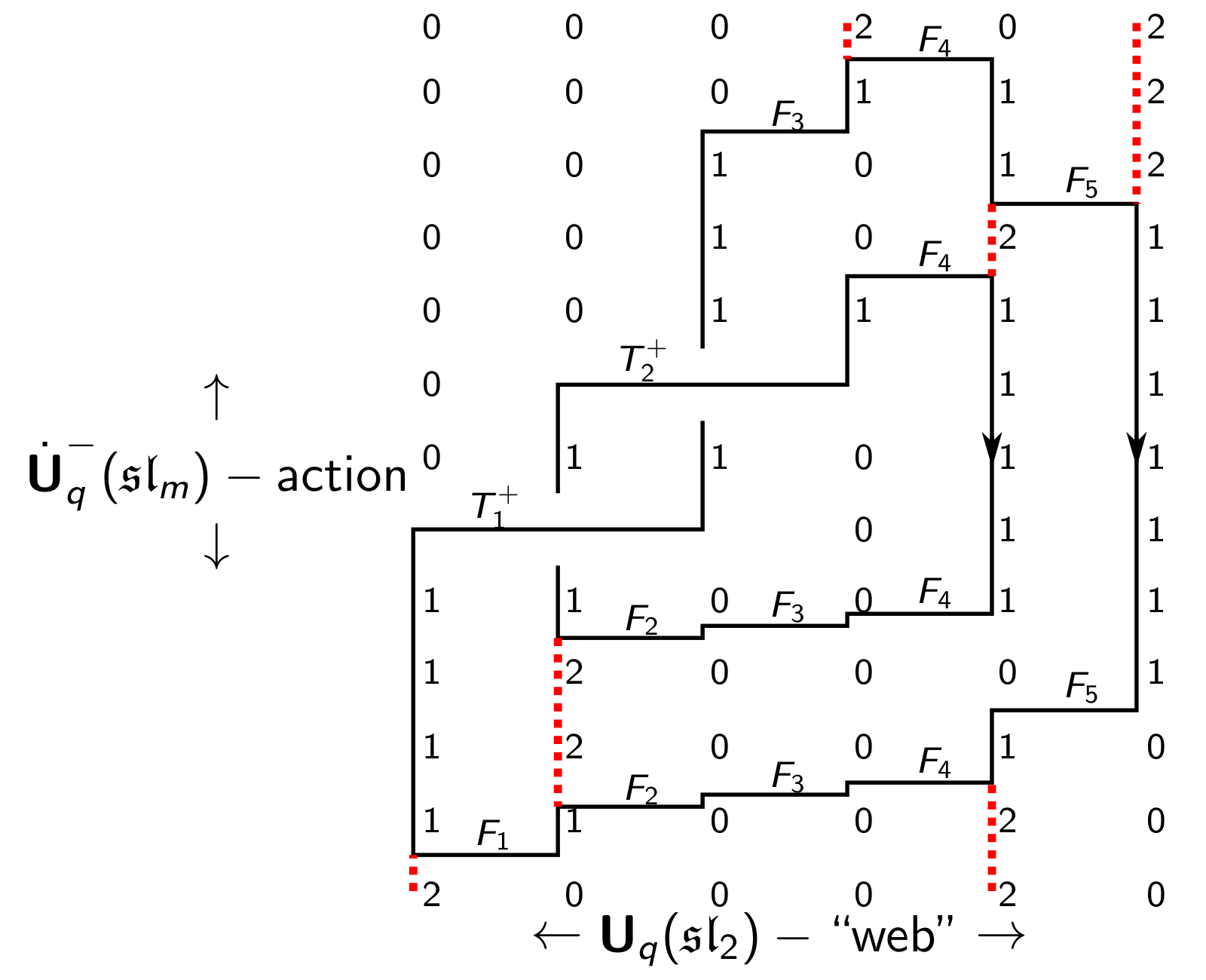Data
- Title: \(\mathfrak{gl}_n\)-webs, categorification and Khovanov-Rozansky homologies
- Author: Daniel Tubbenhauer
- Status: J. Knot Theory Ramifications 29-11 (2020), 96 pages. Last update: Fri, 2 Oct 2020 05:17:24 EST
- ArXiv link: http://arxiv.org/abs/1404.5752
- ArXiv version = 0.99 published version
- LaTex Beamer presentation: Slides1, Slides2, Slides3
Abstract
In this paper we define an explicit basis for the
\(\mathfrak{gl}_n\)-web algebra $H_n(\vec{k})$ (the
\(\mathfrak{gl}_n\) generalization of Khovanov's arc
algebra) using categorified q-skew Howe duality.
Our construction is a \(\mathfrak{gl}_n\)-web version
of Hu--Mathas' graded cellular basis and has two major applications:
it gives rise to an explicit isomorphism between a certain
idempotent truncation of a thick calculus cyclotomic KLR
algebra and \(H_n(\vec{k})\), and it gives an explicit graded
cellular basis of the 2-hom space between two \(\mathfrak{gl}_n\)-webs.
We use this to give a (in principle) computable
version of colored Khovanov-Rozansky \(\mathfrak{gl}_n\)-link
homology, obtained from a complex defined purely combinatorially
via the (thick cyclotomic) KLR
algebra and needs only F.
A few extra words
The main observation is that the \(\mathfrak{gl}_n\)-web space \(W_n(\vec{k})\) is, under
q-skew Howe duality, the \(\dot{\textbf{U}}_q(\mathfrak{gl}_m)\)-weight module of weight
\(\vec{k}\) in a certain \(\dot{\textbf{U}}_q(\mathfrak{gl}_m)\)-highest weight module.
It turns out that every \(\mathfrak{gl}_n\)-web can be obtained by a string of only F's acting
as elements of \(\dot{\textbf{U}}_q(\mathfrak{gl}_m)\) on a highest weight vector. Thus, we can say that the
\(\mathfrak{gl}_n\)-web space \(W_n(\vec{k})\) is an instance of
\(\dot{\textbf{U}}_q(\mathfrak{gl}_m)\)-highest
weight theory.
A closed \(\mathfrak{gl}_n\)-web is therefore nothing else than a quantum number since one jumps from the 1-dimensional
highest weight space to the 1-dimensional lowest weight space using the
F's of \(\dot{\textbf{U}}_q(\mathfrak{gl}_m)\).
As a consequence: One can write each (colored) link as string of F's together with operators T
for crossings. As for example displayed below for the Hopf link (with restriction to \(n=2\)).
Here we act with the F's from bottom to top
and the \(\dot{\textbf{U}}_q(\mathfrak{gl}_m)\)-weight spaces can be read of from the number grid.
The operators T measure the difference how one can hop around from the highest to the lowest weight and we
obtain the Reshetikhin-Turaev \(\mathfrak{gl}_n\)-link polynomials therefore as an instance of
\(\dot{\textbf{U}}_q(\mathfrak{gl}_m)\)-highest weight theory.
History repeats itself: The same is true for the \(\mathfrak{gl}_n\)-link homologies. We just replace the weight
modules with weight categories, the F's with functors and the measurement of the difference with certain
natural transformations.
And since everything an the level of the \(\mathfrak{gl}_n\)-link polynomials takes place in a
certain \(\dot{\textbf{U}}_q(\mathfrak{gl}_m)\)-module of highest weight
we can obtain the Khovanov-Rozansky \(\mathfrak{gl}_n\)-link homologies by only using the cyclotomic KL-R algebra.
Thus, these homologies are instances of categorified \(\dot{\textbf{U}}_q(\mathfrak{gl}_m)\)-highest
weight theory.

